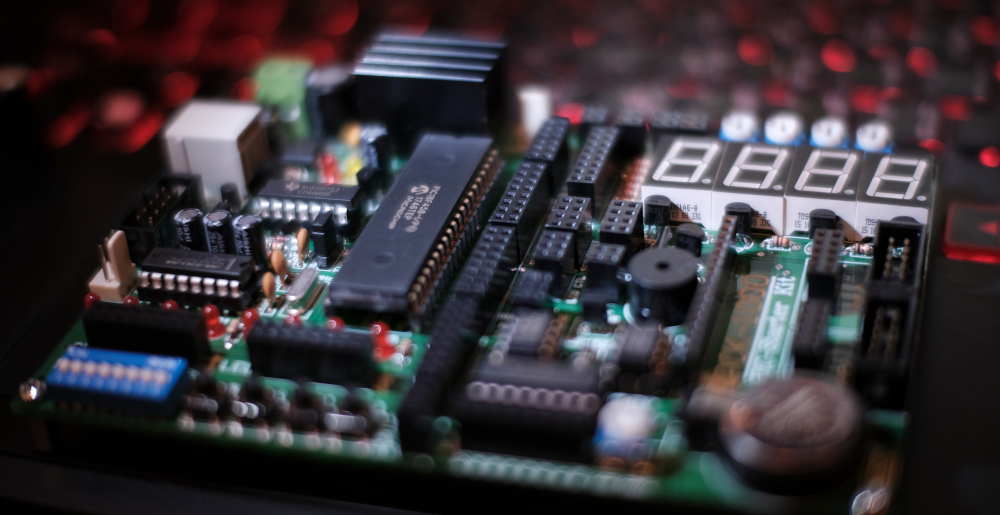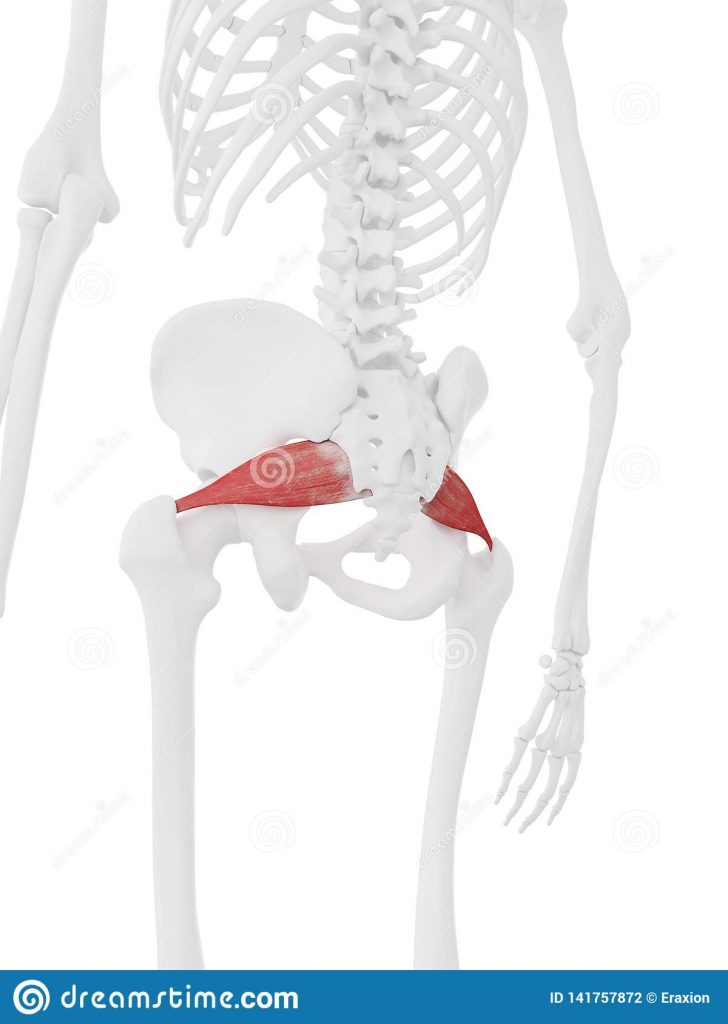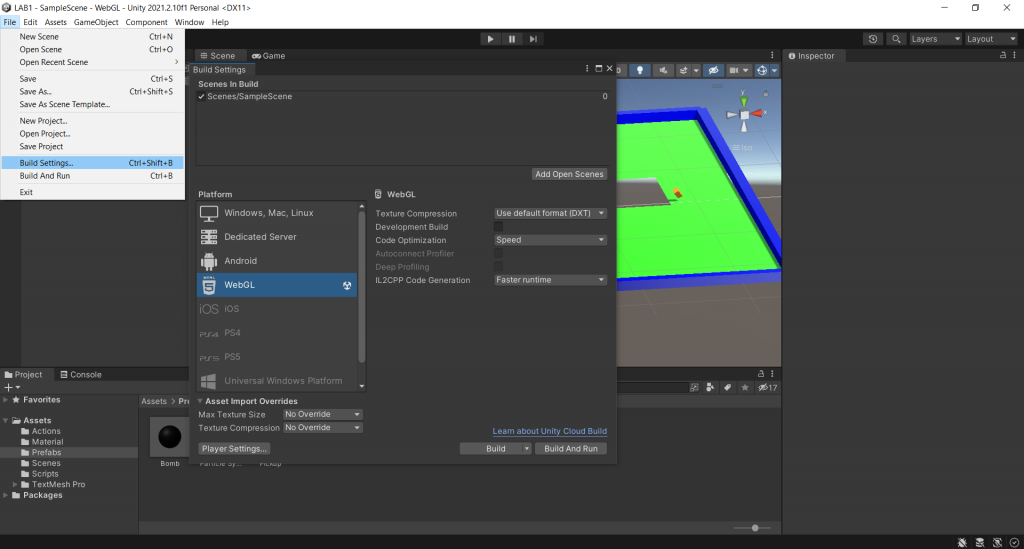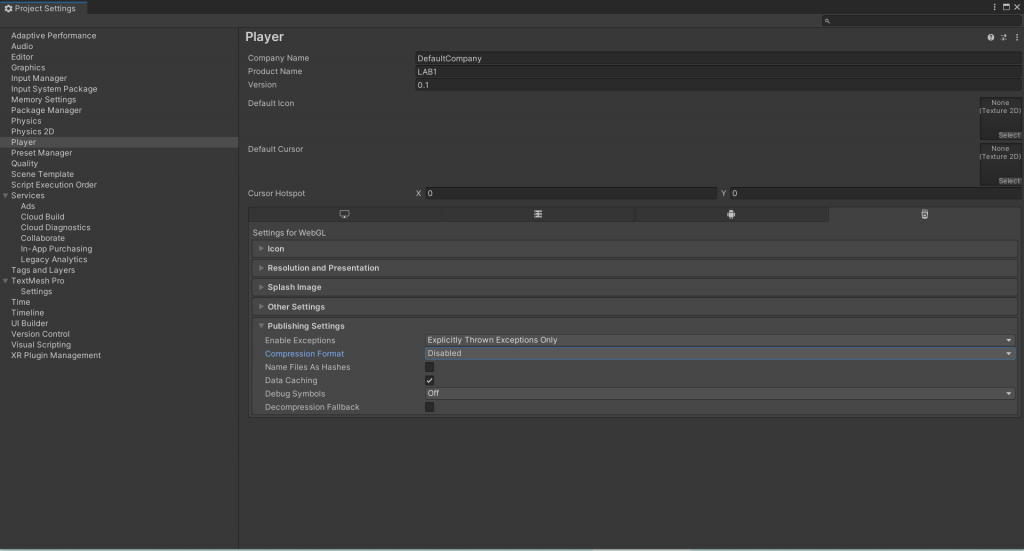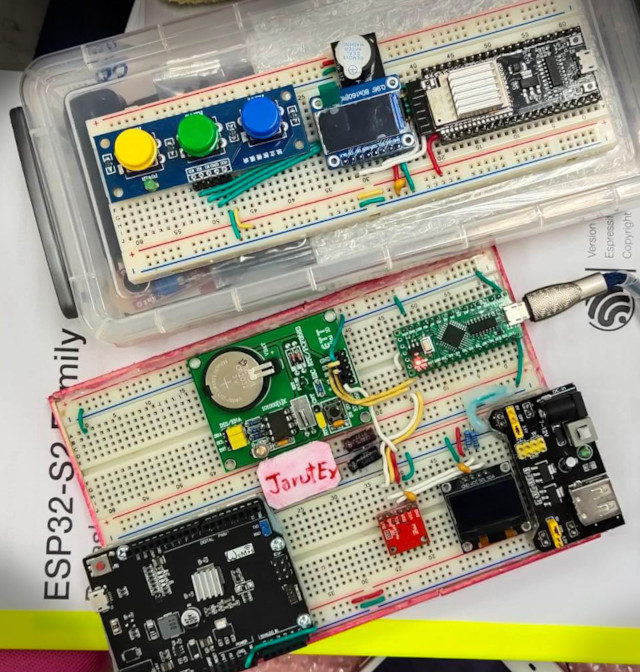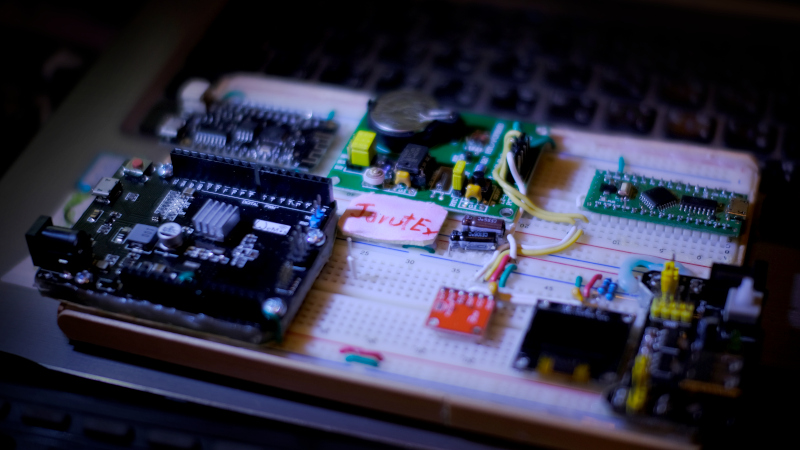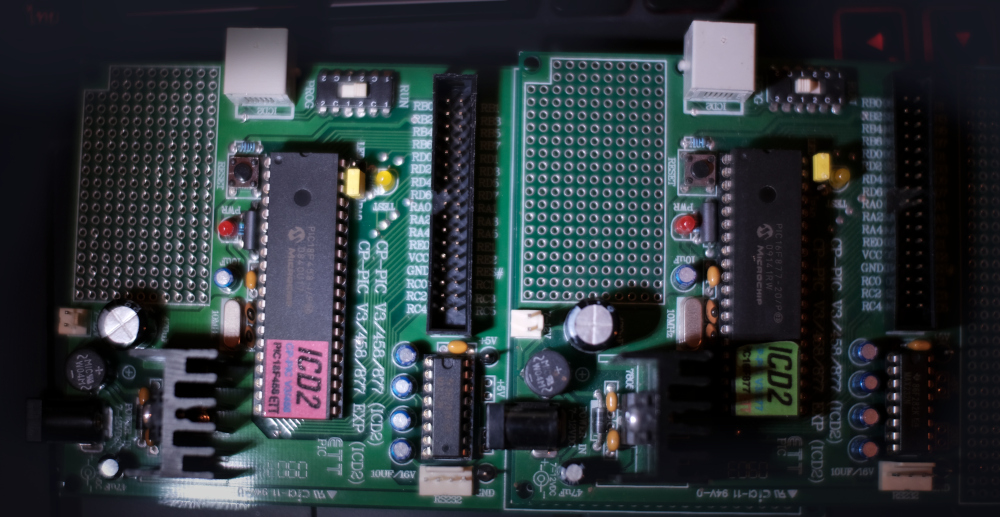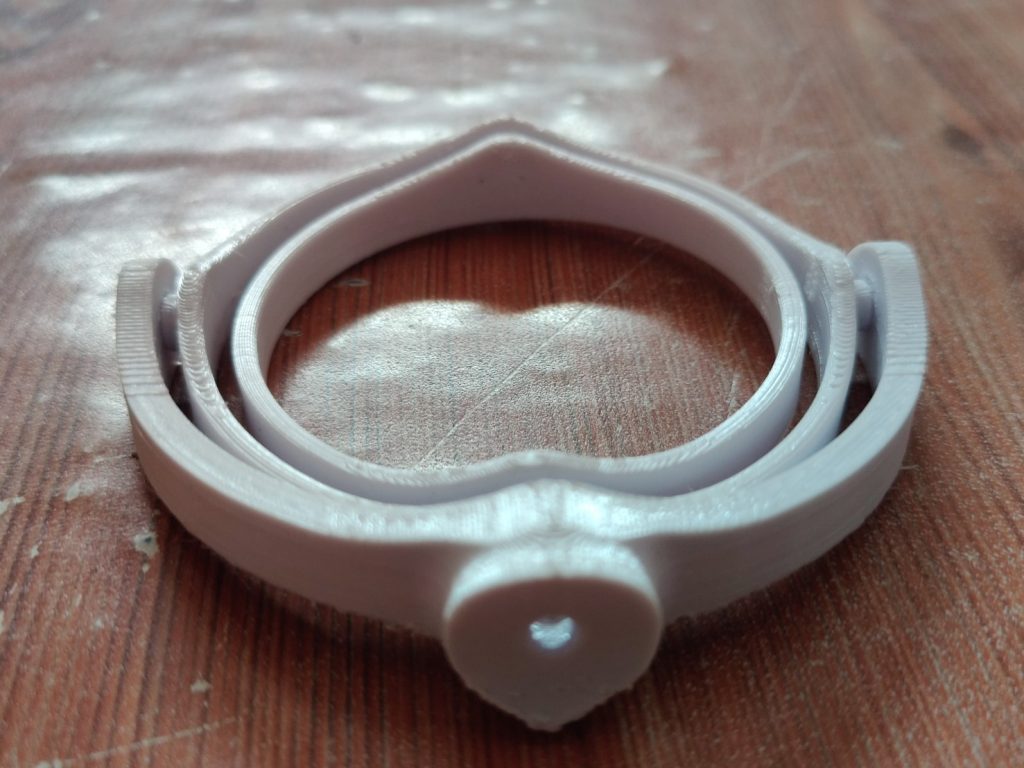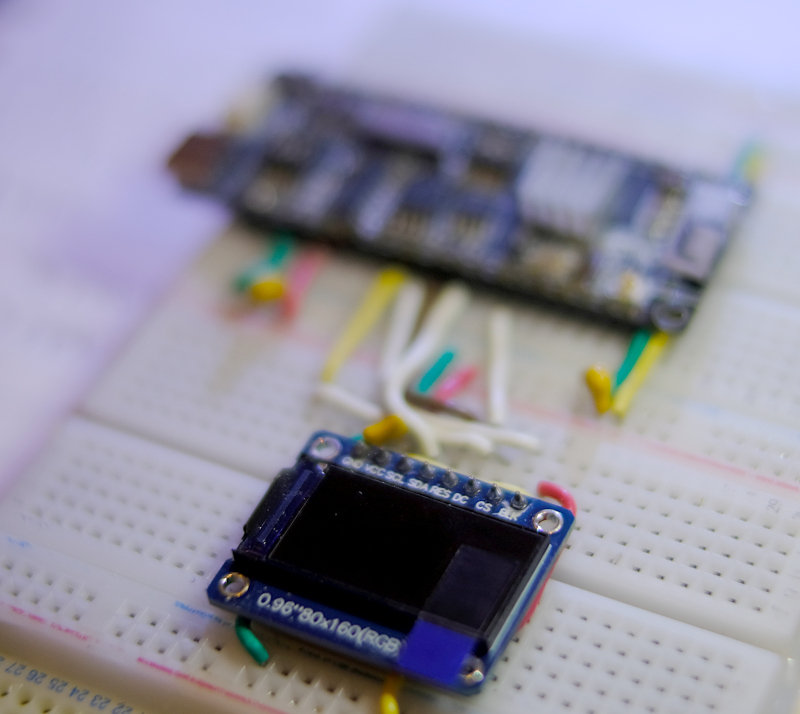บทความนี้เป็นเรื่องการพิมพ์สามมิติเกี่ยวกับ Filament ซึ่งเป็นพลาสติกที่ถูกหลอมและนำไปขึ้นรูปเป็นวัตถุต่างๆ ตามต้องการได้ โดยพูดถึงคุณสมบัต ของ Filament ที่ได้รับความนิยม ซึ่งมี 3 ชนิดคือ PLA, PETG, ABS

ในการพิมพ์สามมิติสิ่งสำคัญที่ขาดไม่ได้คือวัตถุดิบตัวกลางในการขึ้นรูป ซึ่งก็คือ Filament นั่นเอง โดยแต่ละชนิดนั้นมีคุณสมบัติที่แตกต่างกันไป
PLA
PLA เป็นพลาสติกที่ได้รับความนิยมอย่างมากในการพิมพ์สามมิติ วัสถุถูกผลิตจากวัสดุจากธรรมชาติ โดยมีคุณสมบัติคือ
- เป็นวัสดุที่แข็ง ยืดหยุ่นได้น้อย
- ทนความร้อนได้ต่ำ
- แข็งตัวได้ไว
จากคุณสมบัติที่กล่าวมาจะเห็นได้ว่า PLA นั้นเป็นวัสดุที่เหมาะสมกับชิ้นงานที่ไม่โดนความร้อนมาก สามารถขึ้นรูปได้ง่าย มีความคงทนพอสมควร แต่ไม่ควรใช้สร้างวัตถุที่ต้องมีการยืดหยุ่นเยอะ เพราะมีลักษณะยอมหักไม่ยอมงอ ในปัจจุบันได้มีการพัฒนาเพิ่มคุณสมบัติให้กับ PLA โดยผู้ผลิตหลายเจ้าโดยการใส่สารเพิ่มเติมลงไปซึ่งเป็นสูตรของแต่ละเจ้าเพื่อให้ PLA นั้นมีความคงทนมากขึ้น ยืดหยุ่นและทนความร้อนมากขึ้น โดยมีชื่อเรียกที่แตกต่างกันไปเช่น PLA+ PLA Pro เป็นต้น
PETG
เป็นพลาสติกที่ได้รับความนิยมในหมู่คนที่เริ่มมีความรู้เพิ่มขึ้นในการพิมพ์สามมิติ เนื่องจากการพิมพ์ต้องมีการปรับจูนพอสมควรเพื่อให้ได้วัตถุที่ต้องการ มีคุณสมบัติคือ
- เป็นวัสดุที่แข็ง แต่ยืดหยุ่นได้มาก
- ทนความร้อนได้มากขึ้นกว่า PLA
- แข็งตัวได้ช้าลงเมื่อเทียบกับ PLA
ในการพิมพ์สามมิติด้วย PETG มีข้อคำนึงเพิ่มขึ้นเพื่อแลกกับคุณสมบัติที่มากขึ้นเช่น ความร้อนของฐานต้องเหมาะสม ความร้อนของหัวพิมพ์ต้องเหมาะสม การเปิดปิดพัดลมเป่าชิ้นงาน เนื่องจาก PETG นั้นแข็งตัวช้ากว่าทำให้การพิมพ์จำเป็นต้องใช้พัดลมที่มีประสิทธิภาพและตรงจุด แต่หากพัดลมเปิดผิดจังหวะอาจทำให้แต่ละชั้นในชิ้นงานไม่ติดกันหรือไม่แข็งแรงได้
ABS
เป็นพลาสติกที่มีความแข็งแรงมากที่สุดจากที่กล่าวมา แต่ก็จำเป็นต้องใช้ความรู้มากเช่นกัน เนื่องจากจำเป็นต้องควบคุมตัวแปรในการพิมพ์ให้เหมาะสมตลอดเวลา ไม่เช่นนั้นชิ้นงานอาจเสียได้ทันที มีคุณสมบัติคือ
- มีความแข็งแรงทนทานมาก ยืดหยุ่นได้
- ทนความร้อนได้สูงกว่า PETG
การพิมพ์ด้วย ABS นั้นต้องปรับจูนการพิมพ์เพิ่มขึ้นและควบคุมทั้งหมดให้คงที่ตลอดเวลาไม่ว่าจะเป็น อุณหภูมิหัวพิมพ์ อุณหภูมิของฐาน รวมถึงปัจจัยภายนอกเช่น ลมที่พัดเข้ามาจึงอาจต้องมีกล่องครอบเพื่อบังลมให้มากที่สุด เพราะหากอุณหภูมิไม่เหมาะสมเมื่อไรชั้นในชิ้นงานที่กำลังพิมพ์ก็พร้อมที่จะหลุดจากกันได้ทันที
ข้อควรระวัง
ในการพิมพ์ชิ้นงานทั้งหมดไม่ว่าจะใช้ Filament อะไรก็แล้วแต่จำเป็นต้องรักษาคุณภาพของพลาสติกให้ดีอยู่เสมอ ไม่เช่นนั้นอาจพบปัญหาในการพิมพ์ได้ไม่ว่าจะเป็น ชั้นของชิ้นงานไม่ติดกันทั้งที่ปรับจูนเครื่องพิมพ์ดีแล้ว ชิ้นงานไม่เรียบ เส้น Filament หักคาเครื่อง เป็นต้น โดยสิ่งที่ควรระวังคืออย่าให้เส้นมีความชื้น และในการพิมพ์เมื่อแกะห่อแล้วควรใช้ให้หมดโดยเร็วที่สุด และควรเลือกซื้อ Filament จากเจ้าที่น่าไว้ใจ เพราะบางเจ้าอาจขายของค้างสต็อกซึ่งก็ส่งผลถึงคุณภาพการพิมพ์เช่นกัน
ข้อแนะนำในการเลือกใช้ Filament
หากเป็นมือใหม่ควรเริ่มต้นจาก PLA ก่อนเนื่องจากพิมพ์ได้ง่ายมาก (แต่เราดันห้าวไปใช้ PETG ในการพิมพ์ครั้งแรก ถึงกับปวดหัวเลยครับ) การควบคุมปัจจัยต่างๆ ไม่จำเป็นมาก ใช้เวลาน้อยกว่า
แต่เมื่อต้องการชิ้นงานที่มีความทนมากขึ้นระดับกลางก็ให้เปลี่ยนมาใช้ PETG เนื่องจากตัววัสดุสามารถสร้างชิ้นงานที่มีความแข็งได้พอๆกับ PLA แต่สามารถยืดหยุ่น หักงอได้มากกว่ามาก
สุดท้ายเมื่อต้องการใช้ชิ้นงานที่รับแรงกระแทกหรือคงทนมากๆ ก็ให้เปลี่ยนมาใช้ ABS เพราะมีความคงทนมากที่สุด
สรุป
Filament แต่ละชนิดมีคุณสมบัติที่แตกต่างกันและมีปัจจัยควบคุมที่มีความเข้มงวดต่างกัน โดยที่หากเป็นมือใหม่ควรเริ่มจาก PLA ก่อนเพราะพิมพ์ง่าย และหากต้องการชิ้นงานที่ยืดหยุ่นมากขึ้นให้เปลี่ยนมาใช้ PETG ซึ่งมีคุณสมบัติที่ยืดหยุ่นมากขึ้น แต่หากต้องการใช้ชิ้นงานที่ทนแรงกระแทกมากขึ้นอีกก็เปลี่ยนมาใช้ ABS แต่ยิ่งวัสดุมีความคงทนมากเท่าไรการปรับจูนก็จะยิ่งยากขึ้นไปเท่านั้น
(C) 2022, อ.จารุต บุศราทิจ / อ.ดนัย เจษฎาฐิติกุล
ปรับปรุงเมื่อ 2022-03-17, 2022-03-19
